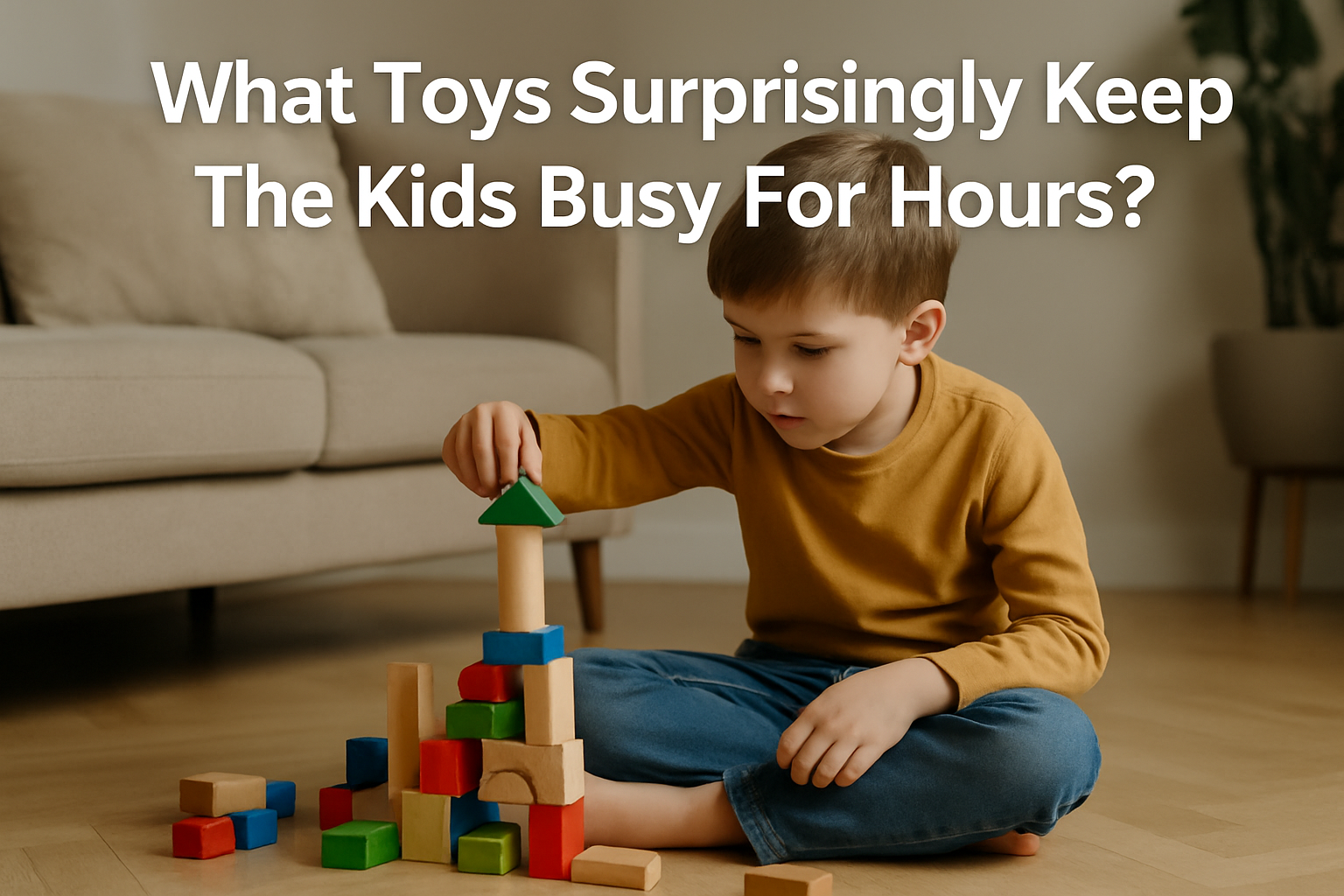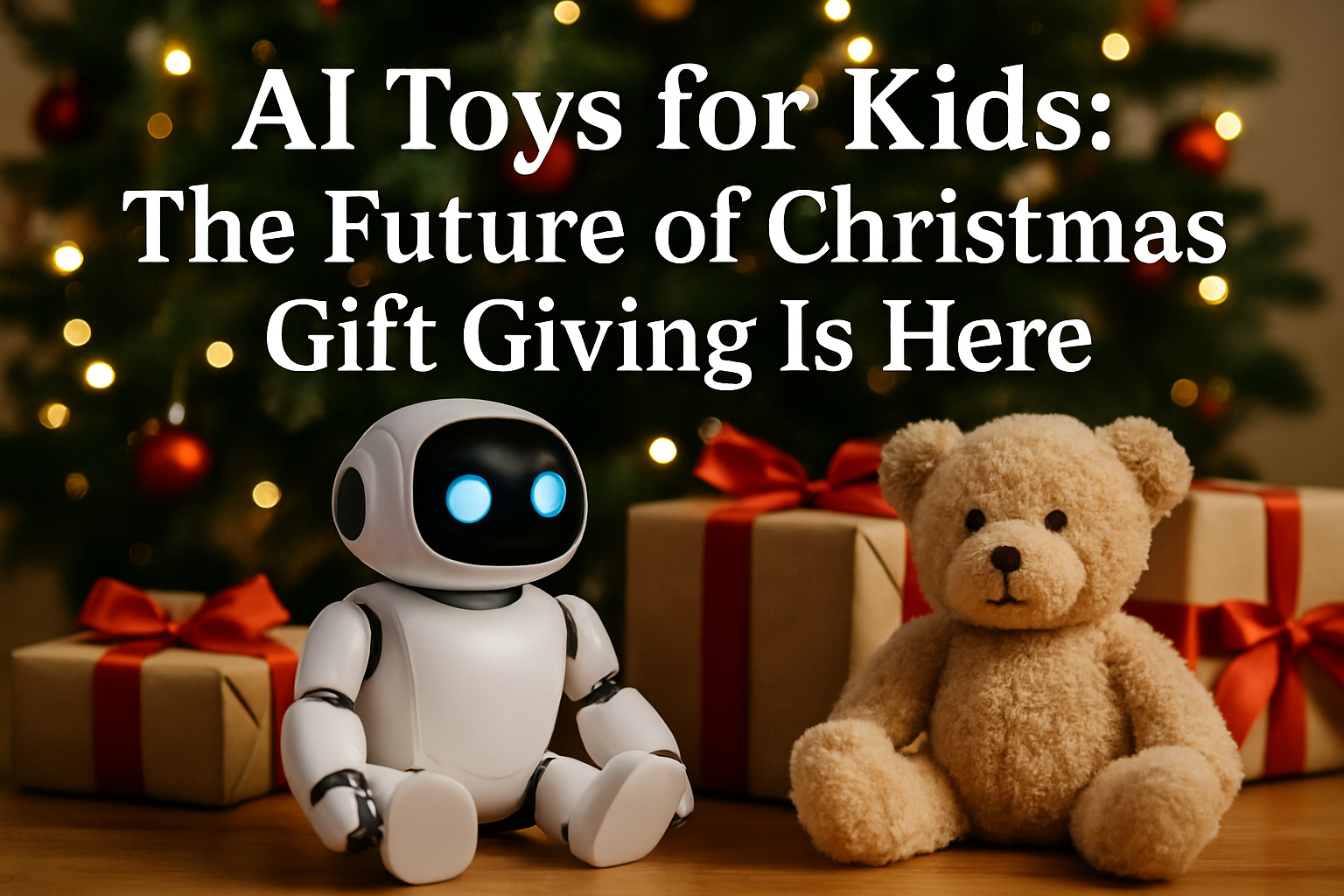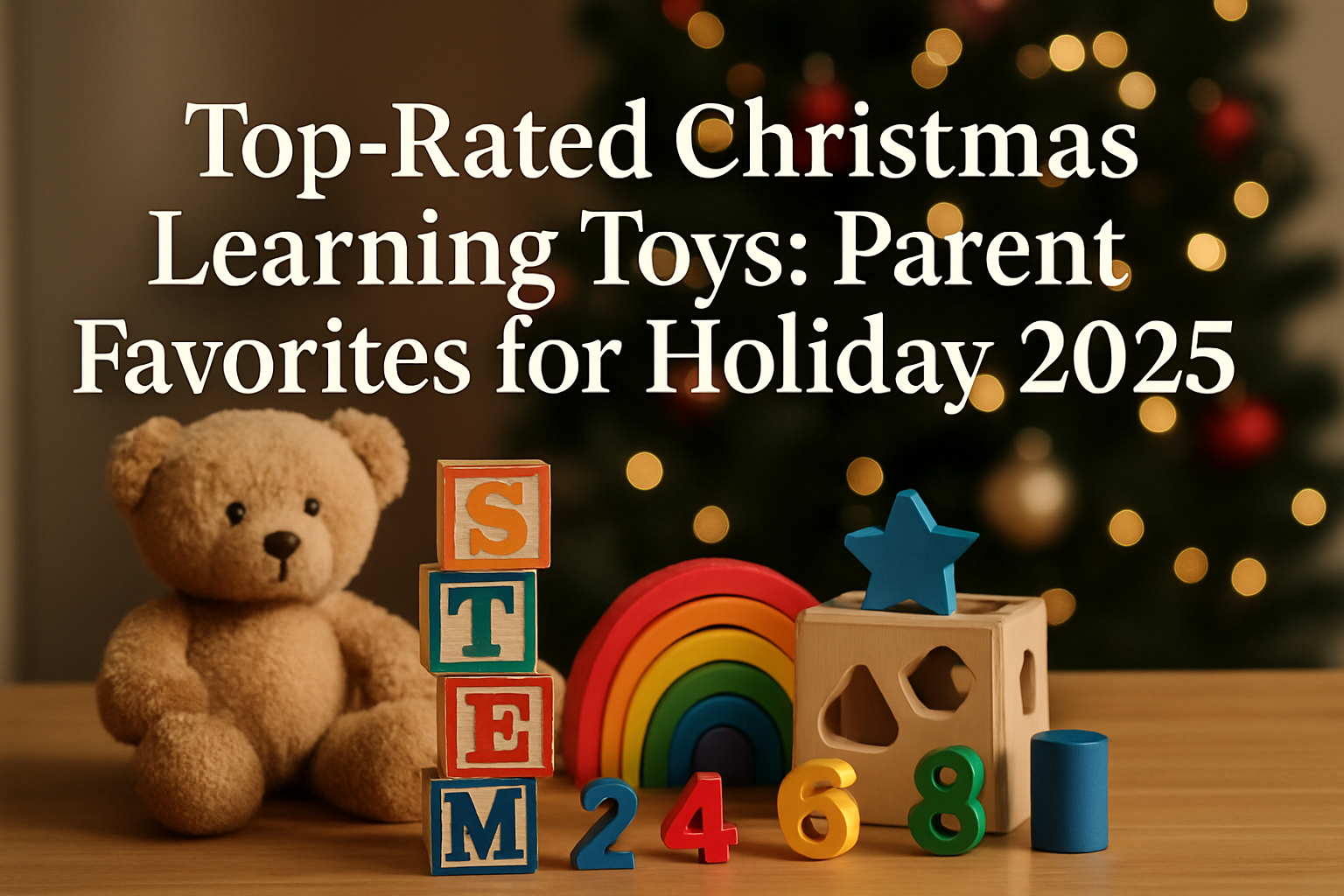AI Toys for Kids: The Future of Christmas Gift Giving Is Here
IntroductionThe role of toys in early childhood development extends far beyon...
Add description, images, menus and links to your mega menu
A column with no settings can be used as a spacer
Link to your collections, sales and even external links
Add up to five columns
Add description, images, menus and links to your mega menu
A column with no settings can be used as a spacer
Link to your collections, sales and even external links
Add up to five columns

The role of toys in early childhood development extends far beyond mere entertainment; they are essential tools for learning and engagement. Creating opportunities for prolonged engagement is vital for children as it allows them to explore, discover, and develop crucial skills at their own pace. Engaging toys can transform playtime into enriching experiences, fostering creativity and independence, as well as enhancing cognitive, social, and emotional development.
One significant aspect of engaging toys is that they support children's natural curiosity and desire to interact with the world around them. When children are invested in a toy, they are more likely to revisit it, leading to extended periods of focus and creativity. This sustained engagement not only keeps children entertained but also promotes essential skills such as problem-solving, cooperation, and self-regulation. As they navigate playtime challenges, they learn to think critically, collaborate with peers, and express their thoughts and feelings.
Furthermore, the benefits of prolonged engagement extend to emotional development. When children immerse themselves in play, they often explore different roles and scenarios, which promotes empathy and understanding of diverse perspectives. Engaging toys can help children express their emotions, manage their feelings, and enhance interpersonal relationships, leading to well-rounded emotional growth.
Keeping children engaged through play is significant, as it serves multiple facets of their development. Engaging toys stimulate curiosity, encouraging exploration and discovery. They help children develop critical thinking and problem-solving skills as they interact with different materials and scenarios. Beyond just fun, toys that capture a child’s interest can assist in improving attention spans and fostering patience through sustained interaction.
Prolonged engagement with toys is linked to numerous developmental benefits. For instance, it enhances social skills as children play together, learning to communicate and cooperate while building relationships with their peers. These interactions are foundational for developing emotional intelligence, a crucial skill that helps children navigate their feelings and those of others. Moreover, active and engaged playtime can lead to improved concentration and focus in various aspects of learning, from academics to daily tasks.
Investing in engaging toys promotes healthy development by providing an enriching play environment. When children have access to toys that challenge their thinking and creativity, they are more likely to engage in meaningful play that fosters learning. Simple yet stimulating toys can jumpstart imaginative play and collaboration with others, solidifying the connections formed during these activities.
Several characteristics make a toy engaging, contributing to its ability to hold a child's attention for extended periods. Key among these features is the capacity to nurture creativity and imagination. Toys that are open-ended and allow for multiple uses invite children to explore different possibilities, enabling them to create their unique scenarios. Such versatile play experiences cater to children's diverse interests and developmental needs, making them appealing for longer durations.
Another aspect of engaging toys is the balance between structured and unstructured play. While some toys encourage guided activities, those that allow free play promote creative thinking and exploration. Open-ended toys, like building materials or art supplies, enable children to design and construct according to their whims, building their confidence and problem-solving skills. This kind of play offers pathways for children to express their thoughts and ideas organically, rather than following imposed guidelines.
Durability and safety also play a significant role in the engagement level of toys. Toys that withstand wear and tear while providing a safe play environment can offer peace of mind to parents and caregivers. Ensuring that toys are made from non-toxic materials not only keeps children safe but also allows for worry-free enjoyment during creative play. When children feel secure in their exploration, they are more likely to engage deeply and energetically with their toys.
There’s something magical about a child’s imagination, and the right toys can unleash that creativity. Some toys become a canvas for endless play and exploration, keeping kids engaged for hours. Large cardboard boxes, for instance, transform from mundane packaging into imaginative playgrounds. Children can turn them into forts, spaceships, or whatever their minds conjure, encouraging both creativity and physical activity. These boxes can be decorated and modified, allowing children to customize their creations, which adds to the fun and engagement.
Magnatiles offer another fantastic option. These colorful building tools encourage children to use their imagination while learning about geometry. As they construct various shapes and structures, kids naturally explore concepts of balance and stability. This form of play not only keeps them engaged but supports cognitive development. Similarly, kinetic sand provides a sensory-rich experience that enhances fine motor skills as children mold and sculpt. The unique texture allows for varied forms of creative play, making it highly engaging.
Classic options like Play-Doh remain timeless as they encourage shape-building and creative expression through sensory play. For younger children, larger building blocks are ideal; they enhance motor skills while allowing for imaginative construction. Train sets are another favorite, promoting imaginative play as children create intricate tracks and stories around their trains. Additionally, dolls and action figures inspire role-playing scenarios, fostering social skills and creativity. Craft supplies further expand the horizons of play, offering children endless possibilities for artistic expression and creativity.
When it comes to educational toys, the aim is to blend learning with fun. Magnetic building tiles, for example, are designed to foster teamwork and help develop STEM skills. As children collaborate to construct various shapes and structures, they inadvertently engage in logical thinking and problem-solving. This type of play not only enhances cognitive skills but also teaches the value of cooperation and collaboration in educational settings.
Coding and robotics kits take learning to the next level by promoting logical thinking and creativity. Children gain valuable skills as they program robots or create simple coding sequences, ensuring that learning becomes an interactive experience. Science experiment sets also capture the curiosity of young scientists. Engaging hands-on activities in these kits allow children to explore scientific concepts while having fun. This practical approach to learning is particularly effective in capturing and holding their interest.
Art and craft kits encourage artistic expression, helping children develop fine motor skills while creating projects that can be displayed or shared. Similarly, puzzles and brain teasers challenge critical thinking and problem-solving abilities. As children work to fit pieces together or solve complex challenges, they learn persistence and patience. Language learning toys add an interactive dimension to education, making it enjoyable for children to immerse themselves in new languages. Lastly, outdoor exploration kits pique curiosity about the natural world, encouraging kids to engage with their environment. Each of these educational toys brings a unique element to play, ensuring that learning remains enjoyable and engaging.
Promoting creativity and exploration in children can be effectively achieved through loose parts play. This type of play encourages kids to manipulate various everyday items, fostering imaginative scenarios and inventive designs. Loose parts can range from natural elements like stones and leaves to household objects such as cardboard boxes or fabric scraps. These items serve as blank canvases for children, allowing them to build and create freely, significantly enhancing their problem-solving skills and creativity.
Simple DIY toys can be made from household materials, making them accessible and practical. For example, a homemade rattle can be created using an empty bottle filled with beans or rice, providing both auditory stimulation and a tactile experience. These straightforward projects can engage infants and toddlers, encouraging their development through play while being cost-effective. Moreover, activities such as making play dough from flour and water not only provide sensory experiences but also create opportunities for children to express themselves artistically.
Utilizing common household items for play can keep kids mentally stimulated and engaged. Items such as plastic containers, old magazines, or even kitchen utensils can be transformed into tools for imaginative play. Family members can join in, crafting stories and scenarios that enhance the fun. Additionally, providing art and craft supplies like paper, crayons, and glue allows children to engage in self-expression, creating artwork that reflects their thoughts and emotions. This approach not only nurtures their creative side but also aids in the development of fine motor skills.
Climbers and indoor play structures are essential for promoting gross motor development in children. These structures allow children to explore their physical abilities, encouraging them to climb, crawl, and navigate through various obstacles. The act of climbing enhances strength and coordination, while also promoting confidence as children master new skills. Safe indoor play structures can provide an excellent alternative to outdoor play, especially in inclement weather.
Moreover, soft play blocks are invaluable for encouraging climbing skills in a safe environment. They can be stacked, jumped on, or rearranged, providing endless possibilities for imaginative play. Balance beams and boards are also effective tools for improving coordination and concentration. As children practice walking across these items, they learn to maintain balance and develop their physical coordination, which can be beneficial in numerous aspects of their daily lives.
Sensory stepping stones provide a unique opportunity for tactile engagement, often featuring different textures to stimulate a child's sense of touch. These stepping stones can be set up as an obstacle course, challenging children to navigate their way across in a fun and interactive manner. Additionally, indoor trampolines provide a fantastic outlet for physical activity and exercise, allowing children to burn energy while enjoying themselves. This variety of indoor toys not only facilitates active play but also ensures that children remain engaged and physically active regardless of the environment.
Selecting the proper toys for children is essential for their growth and development. When considering the types of toys to introduce, prioritize those that foster engagement and creativity. Begin by understanding the importance of open-ended toys. These toys encourage imaginative play and allow children to explore their creativity without predefined limits. Unlike traditional toys, which typically have a single purpose, open-ended options offer various ways to be utilized, nurturing critical thinking and problem-solving skills.
Timeless toys—those that have endured through generations—also play a pivotal role in child development. They tend to emphasize fundamental play patterns that encourage exploration and collaboration. While contemporary toys often rely heavily on technology, timeless toys engage children through imaginative scenarios and physical interaction. This timeless aspect not only makes them valuable for today’s children but also for future generations, as they seamlessly integrate into evolving play styles.
Additionally, consider selecting environmentally friendly toys to promote sustainability. Choosing materials that are sustainable or recycled demonstrates a commitment to the health of the planet while educating children on the importance of ecological responsibility. Pair this with an effort to limit electronic toys. These toys often cater to passive interaction, detracting from the active learning process. A range of open-ended, environmentally friendly options can create a play-filled environment that encourages deeper cognitive and social engagement among children.
When it comes to selecting engaging toys, parents should be mindful of their child's developmental stage. Identifying toys that align with developmental milestones ensures that children remain challenged yet not overwhelmed. Age-appropriate toys facilitate better engagement, allowing kids to explore concepts that resonate with their current capabilities. Furthermore, open-ended play should be encouraged; toys that can serve multiple purposes invite creativity and flexibility, allowing children to shift their focus and explore new ways of playing.
Safety is another vital consideration when selecting toys. Parents should avoid toys with small parts that pose choking hazards, as safety should always come first in play scenarios. Furthermore, a balanced assortment of toys that cater to physical, cognitive, and creative development is essential. Toys that promote physical activity can foster motor skill growth, while those that stimulate cognition can enhance problem-solving abilities. Meanwhile, creative toys can inspire artistic expression. A well-rounded set of toys can lead to comprehensive development, nurturing various skills essential for child's holistic growth.
In the world of toy selection, parents should strive to foster an enriching play experience. A thoughtful combination of open-ended, safe, and developmentally appropriate toys encourages exploration and learning. By focusing on these elements, parents can create an environment that nurtures their child's growth while simultaneously keeping them engaged and entertained.
Toys play a pivotal role in stimulating children's exploration and problem-solving abilities. Engaging with toys fosters an environment where young minds can experiment, discover, and learn through trial and error. Building blocks, puzzles, and other manipulatives encourage children to think critically as they figure out how pieces fit together or how to create structures. This active engagement not only enhances cognitive skills but also promotes motor development. As children grasp, push, and pull different toys, they develop fine motor skills essential for writing and other daily tasks.
Moreover, toys can significantly enhance language and communication skills in children. When children play with toys that stimulate storytelling and role play, they often find themselves narrating actions and dialogues, which enriches their vocabulary. Imaginative play allows them to express emotions and thoughts, helping them become more articulate. Engaging with peers using shared toys also opens avenues for dialogue, encouraging children to practice conversational skills, ask questions, and articulate their ideas. This interactive dimension of play nurtures both cognitive and social competencies that are vital as they grow.
Thus, the influence of toys extends beyond mere entertainment. They serve as tools that foster essential developmental milestones. Through playful interaction, children learn not just how to solve puzzles or build structures but also how to think creatively and communicate effectively. These experiences forge a strong foundation for lifelong learning, making the role of toys in cognitive and motor skills development indispensable.
The role of toys transcends cognitive development and reaches into the realms of social skills and emotional growth. Toys often encourage interaction and cooperation among peers, facilitating collaborative play that fosters teamwork. When children engage in group play, whether they are sharing building blocks to create a big structure or participating in a cooperative game, they learn the dynamics of working with others. This collaboration instills a sense of belonging and teaches valuable interpersonal skills, such as negotiation, conflict resolution, and patience.
In addition to social skills, toys also support emotional management and empathy development. Through play scenarios, children can act out various roles and emotions, which helps them understand their feelings and the feelings of others. For instance, playing with dolls or action figures allows children to simulate real-life situations, offering them insight into different perspectives. This imaginative play is crucial for developing empathy, enabling children to recognize and appreciate the emotions of their peers, which is essential for building healthy relationships as they grow older.
Overall, the impact of toys on social skills and emotional growth is profound. By promoting interaction and encouraging empathy, toys facilitate a holistic developmental experience that contributes to a child's ability to navigate their social environment. As play becomes a shared activity, children not only bond with others but also reflect on their emotional responses, setting the stage for personal development and social competence throughout their lives.
Selecting the right toys for engagement is an important aspect of childhood development. Throughout the research, it has become clear that certain types of toys stand out in their ability to captivate children's attention and enhance their learning experiences. For instance, toys that encourage open-ended play tend to facilitate creativity and critical thinking skills. Building blocks, art supplies, and imaginative role-play sets are effective in promoting cognitive growth and can lead to hours of engagement. These toys allow children to explore their ideas freely, fostering a sense of independence and confidence as they create and innovate.
Additionally, toys that integrate sensory experiences also play a vital role in engagement. Many children are drawn to toys that stimulate their senses, such as textures, sounds, and visuals. Toys designed for sensory exploration, such as those that incorporate different materials or light effects, can keep children focused and interested for extended periods. The importance of sensory play cannot be overstated, as it develops fine motor skills and aids in emotional regulation. Parents, caregivers, and educators should consider these aspects when choosing toys, ensuring the selected options provide a fulfilling experience that balances fun and developmental benefits.
As we conclude, it is essential to recognize that the right toys can have a profound impact on a child’s growth and engagement. The findings highlight how thoughtfully chosen toys not only entertain but also serve educational purposes, helping children develop a variety of skills. By focusing on engaging toys that promote play, creativity, and sensory exploration, adults can create enriching environments that support children's overall development. Ultimately, selecting toys that resonate with children's interests and needs encourages both engagement and learning, laying a strong foundation for their future endeavors.

IntroductionThe role of toys in early childhood development extends far beyon...

IntroductionThe role of toys in early childhood development extends far beyon...
Sign up for updates, sneak peeks and a coupon for 10% OFF your first order!